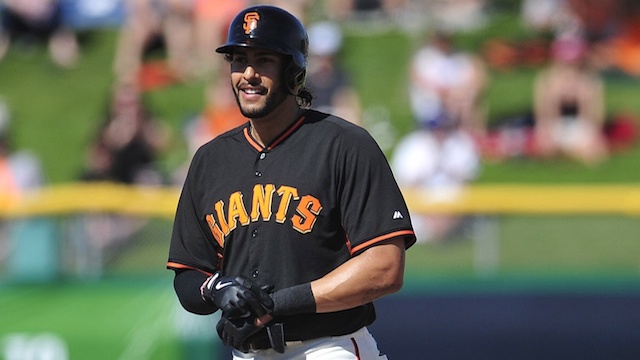The San Francisco Giants currently sport the best record in the Major Leagues and an 8 game lead over all of their NL West competition. As I type, they’re beating the Reds 6-1 in the 8th, and assuming they finish things up, will move to 39-21. They’re on a 105-win pace and they’ve won 11 of their last 14. How has the team that looked so lost for parts of 2013, been so completely dominant the first 2+ months of the season?
After finishing 76-86, the Giants big offseason additions were Mike Morse, coming off of an injury plagued campaign in which he hit .215/.270/.381, and a 38 year old Tim Hudson, who had an ERA near 4.00 before a severely broken ankle derailed his season. Even before last season’s struggles, these weren’t superstars as the two were worth a combined 2.2 WAR in 2012 –already in 2014 they’ve been worth 3.8. But, two good players does not turn a a 76-win team into a team on a 105-win team.
So why are the Giants so good?
The short answer is that they’re better across the board, but that’s a vague platitude. You’ve come here for analysis and this dude will abide.
Regular season success starts with quality, deep starting rotations. The Giants have replaced the Barry Zito albatross contract and performance with Tim Hudson’s reasonable deal and unreasonably impressive start to the season (1.75 ERA through 11 starts is second in the Majors). They’ve also gotten a huge boost in performance out of Ryan Vogelsong, who currently sports a 3.39 ERA, down from 5.77 a year ago. Tim Lincecum, Matt Cain, and Madison Bumgarner appear to be repeating their 2013 numbers, for better and worse, but the marked improvements from Hudson and Vogelsong have shifted the Giants starter ERA from 4.37 to 3.43.
Meanwhile, the bullpen has remained excellent. The group is largely the same as a year ago with Sergio Romo, Santiago Casilla, Jean Machi, Javier Lopez, and Jeremy Affeldt all back. Though it wasn’t a problem area last year, its collective 2.42 ERA currently ranks second in the NL and nearly a full run better than last year’s collective mark. This is thanks largely to an increased role for Jean Machi, and a small sample size.
I have effectively established that the Giants are giving up one fewer run per game than a year ago, but feel I haven’t done justice to why.
One reason for the across the board bump? Improved team walk rate. The Giants have walked .7 hitters fewer per 9 innings than a year ago. That figure represents the best improvement in that span across the league. But I’m not sure that that really means anything. The White Sox have walked significantly more batters than a year ago (.96 more per 9 innings) and have seen their record improve from a 63-99 season to above .500 through 61 games. I spent far too much time doing a bunch of math and even developed an excel spreadsheet trying to find how the Giants have improved so much. What did I settle upon? Well, in simplest terms: Tim Hudson > Barry Zito.
As for the offense, the lineup has also improved dramatically. The team has scored the third most runs in the NL, while scoring the 10th most a year ago. How have they done it? This is where things get interesting. Outside of the dramatic improvement in slugging percentage in left field (Mike Morse) the Giants appear to actually be worse at a number of positions. Buster Posey has yet to hit his stride offensively, Brandon Hicks is hitting .199, and Pablo Sandoval’s OBP is below .300. Angel Pagan is having a good year combining his usual superb defensive performance with a .316 average and .360 OBP.
Last season, the Cardinals hit .330 with runners in scoring position. Could the Giants be hitting at some similarly ridiculous pace? I looked into it, and the answer is no. They’re hitting .242 with men in scoring position. Is Pagan’s improvement atop the order and the added power dimension enough to justify why the Giants have scored almost half a run more per game? Maybe, but I’m still not sold that this is why the Giants are so good.
It seems that–beyond just getting better bounces–momentum might just be the key. San Francisco is averaging .78 runs in the first inning this year, the most in the National League. Maybe this is a question of chemistry; maybe of preparation; maybe of luck. But it seems that thus far the mysterious key to the Giant’s success is the simple formula of getting a lead, and then keeping it. Maybe the bounces will start to go the other way, but as of now Bruce Bochy’s club is sitting pretty at the top of the standings.
-Sean Morash













